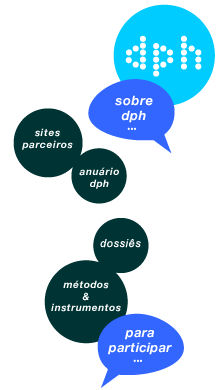An important aspect of shrimp farming that has implications for both global fisheries and food security is the carnivorous nature of some of the prime commercial aquaculture species, e.g. shrimp and salmon, being produced by aquaculture. Semi-intensive and intensive shrimp cultures rely in varying degrees on formulated diets. Fishery products generally make up 70 per cent by weight of compound aquafeeds for most farmed carnivorous finfish and about 50 per cent of marine shrimp. Fishmeal, together with fish oil, shrimp meal and squid meal have become major ingredients of industrially produced aquafeeds since they mimic the composition of the natural food of carnivorous fish and are the simplest and most straightforward way of providing the nutritional requirements of the high value species.
Currently 25 to 50 per cent of the content of feed pellets is derived from captured pelagic fish. Feed accounts for half the costs of production at intensive and semi-intensive farms where fish have to be fed about three times their harvested weight; they convert only about 17 per cent of that food into edible flesh. Shrimp aquafeed use will mean increasing competition for fisheries resources notably in the form of fishmeal. It has been estimated that 20-25 per cent of fish meal production by the year 2000 will be destined for aquafeeds for use in all types of aquaculture production, creating a "fish meal trap". Projections for the expected increase in marine shrimp feed demands in Asia alone by the turn of the century indicate a potential demand of some 776,000 tons, and perhaps as high as one million tons, up from about 480,000 tons in 1990, while global fishmeal production as a whole is expected to be around 6.5 million tonnes by that time.
Assuming that the intensively cultured, carnivorous fish and crustaceans will depend substantially on fishmeal-based diets, it is probable that the expansion of this form of aquaculture will result in increased fishing pressure, particularly in certain regions near large areas of shrimp farming, as demand for fishmeal increases. This gives rise to considerable concern regarding trends in "bio-mass fishing" in Asia which involves highly non-selective fishery techniques (involving small mesh sizes)for the single purpose of catching as many
marine organisms as possible; after the valued commercial component of the catch is removed, the remaining majority -- or "trash" -- is rendered into fishmeal.
The situation in Thailand provides a perfect example. The Thai aquaculture industry has thrived in part because of the phenomenal growth of trawl fishery in the Gulf of Thailand over the past 25 years. Thai trawlers have purposely fished down the food chain to smaller and smaller fish. This has kept their total production from falling substantially, but it means that 70 percent of their landings are now trash fish, suitable only as animal feed. The trawl fishery of the Gulf has essentially become a fish meal producer.
FAO has highlighted concerns about these trends: "Clearly if aquaculture is to be sustainable in the long term and play a significant role in food security, it is imperative that donors, development agencies and governments, wherever possible and economically feasible, promote the culture of species with herbivorous and/or omnivorous feeding habit, which are not dependent upon the use of high-quality protein-rich inputs, and which are able to make
maximum benefit from natural food organisms and farm-made supplementary inputs".
The dependence on marine fish catches makes it difficult to believe those who claim that yields from a rapidly growing aquaculture industry which is dominated by intensive cultivation of single-species, will replace the decline in fisheries harvest. On the contrary, exploitation of wild fish to support the monoculturing of shrimp, salmon and other carnivorous species with nutrients may further reduce commercially important fish stocks on which conventional fisheries are based, and there may be a risk that fish now used for human consumption will be
exploited for fishmeal production.
Palavras-chave
peixe, aquacultura, degradação do meio ambiente
,
Comentários
It is evident that the culture of carnivorous species such as shrimp and salmon, which depend heavily on the use of aquafeed, is unsustainable. It is possible that the culture of such species may lead to the declining availability of fish for human consumption, as more and more of the fish catch gets diverted to fishmeal production, or as the increased fishing pressure on species utilised for fishmeal affect the food chain and the productivity of other commercially important fish species. This is an issue of serious concern and it is important that governments and aid agencies take the lead in funding and supporting sustainable aquaculture systems that contribute to income and food security, especially of low-income groups. In this context it is also significant that high value species, such as shrimp, can, in any case, only be afforded by high-income groups.
Notas
From paper presented by Greenpeace titled "Greenpeace on Industrial Shrimp Aquaculture" to the FAO Technical Consultation on Policies for Sustainable Shrimp Culture, Bangkok, Thailand. December 8-11 1997.
Fonte
Actas de colóquio, seminário, encontro,…
Greenpeace International, Greenpeace on Industrial Shrimp Aquaculture; Biksham Gujja and Andrea Finger-Stich: "What price; prawn? Shrimp aquaculture impact in Asia", Environment, Volume 38, No 7, September 1996

ICSF (International Collective in Support of Fishworkers) - 27 College Road, Chennai 600006, INDIA - Tel. (91) 44-2827 5303 - Fax (91) 44-2825 4457 - Índia - www.icsf.net - icsf (@) icsf.net



